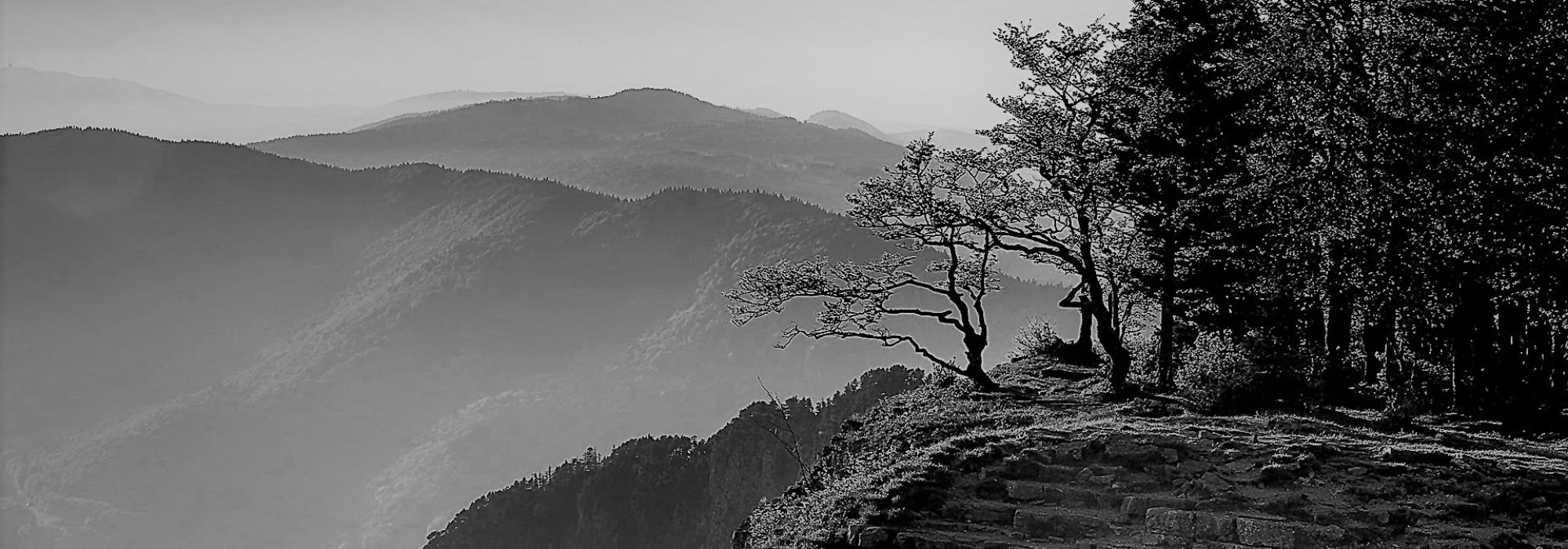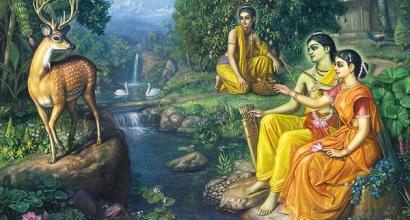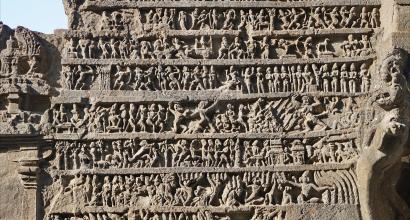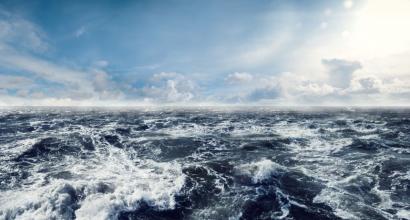The daśa-rūpakas and many upa-rūpakas need to be staged using mārga-karaṇas, mārga-cārīs, and mārga-sthānakas; these have to come along with nṛtta-hastas as well; aṅgahāras may be employed as necessary. Thus, mastery over the grammar of the mārga-tradition is extremely important. Similarly, in the case of quite a few upa-rūpakas and forms of nṛtya documented in the treatises on saṅgīta-śāstra, mastery over the deśī grammar is important. Such forms of dance and theatrical traditions employ larger proportions of deśī-karaṇas, deśī-cārīs, and deśī-sthānakas. Artistes need to be thorough with their application. Deśī-karaṇas are also called utpluti-karaṇas by several aestheticians. It is impossible to understand the theatrical traditions of India and greater India without a thorough understanding of the āṅgika of the mārga and the deśī. Scholars who would like to study these forms of art should possess experiential understanding of both grammars.[1] Let us now have a brief overview of the dance forms mentioned in treatises on saṅgīta-śāstra.
- Gauṇḍalī – This form of dance is discussed in treatises such as Saṅgīta-ratnākara and Nṛtta-ratnāvalī. Gòṇḍa or gòṇḍali refers to a sect of hunters and ādi-vāsis living in Karnataka. The form of dance practiced by them was fine tuned into a special kind of art by King Someśvara, who belonged to the Kalyāṇa-cālukya dynasty. The rāga and tāla that accompanies this form of dance is intricate and complex, and the dance is of the sukumāra flavour; women dominate the presentation of this dance. As she dances, she plays upon a percussion instrument called trivalī, which resembles today's khañjira; this form of dance was largely practiced in Karnataka and therefore, the āhārya of the dancer is also from the region. The performance starts with melāpaka, which signifies the union of śruti, laya, and gati; this is followed by puṣpāñjali; the actual performance follows this – dance, playing of instruments, recitation (and dancing) to complex śuṣkākṣaras form the core; this is followed by a muktāya consisting of complex syllables and then abhinaya is performed; deśī-cārīs are used in the dance. The female dancer may sing and utter the śuṣkākṣaras as well.
- Peraṇī – This form of dance is also found in the treatises mentioned in the previous segment. It is also called buy the names preraṇa and periṇi and is performed primarily by men. The dance is filled with deśī-cārīs and utpluti-karaṇas; special kinds of śuṣkākṣaras and playing of mardalam accompany the performance. The āhārya of the dancers is also special; artistes wear a head gear which resembles hood of a snake; they smear their bodies with bhasma – ash; they wear ornaments that are made of chowries or ornaments which are in the form of snakes; artistes tie bells to their feet along with anklets. Dancers enter the stage in pairs or alone, holding sticks or their uttarīyas. The main dancer stands in the middle of the others. The presentation begins with the performance of Samapāda and Bhujaṅga-trāsita karaṇas and is largely of the uddhata flavour (traces of sukumāra are found as well). The dance of the main artiste has five components – after having performed śuddha-nṛtta filled with tāṇḍava and lāsya, the main artiste sings a poetic composition called kaivāra or kavicāraka; the composition is usually in the form of rāja-stuti, i.e., glorification of a king; this is followed by the presentation of a segment of nṛtta called garghara, which is performed to the accompaniment of percussion instruments; this contains six to several stages of different kinds of footwork – we may call these the ancestors of the aḍavus of Sadir/Bharata-nāṭyam; the fourth part is vikaṭa-nartana, which resembles the mannerisms of bhūta, preta, monkeys, and wild animals; the āṅgika and sāttvika of this part is especially noteworthy; geyas (lyrical songs) are presented towards the end. One of the artistes belonging to the group performs the role of vidūṣaka – he is also called āṭṭabaḍaka. Today, periṇi is revived to some extent in the Andhra region. Vīragāsè practiced in Karnataka has its roots in periṇi and be called its simplified form.
- Pekkhaṇa – Nṛtta-ratnāvalī and Saṅgīta-sārāmṛta describe this form of dance; it is also called prekṣaṇa and peṅkhaṇa. There are six segments in the presentation, which is filled with gīta and nṛtya; utpluti-karaṇas and deśī-cārīs are employed; both men and women participate in this dance of the uddhata flavour.
- Śivapriya – Jāyapa-senānī describes this in the Nṛtta-ratnāvalī; following his example, Rāṇā-kumbha discusses it in his treatise Saṅgīta-rāja as well; the artistes smear bhasma all over their body and are decked with rudrākṣas; they stand in different (concentric) lines and dance in circles; many kinds of percussion instruments are used and the dancers play them as they dance; varieties of śuṣkākṣaras are employed and the dance is of the sukumāra flavour; artistes dance moving along lines and circles, using large varieties of movements; this is primarily performed in festivals connected with the deity Śiva.
- Kòllāṭa – Readers should not mistake this for kolāṭa, i.e., dance with sticks; kòllāṭa is a kind of acrobatic dance; to the accompaniment of laya-vādyas (including the ghana-vādyas), dancers walk on a stretched rope; they also perform different kinds of movements standing atop a tall pole or on the rim of a wheel; some may even stand on the sharp edges of swords; their movements resemble the leaps and jumps of birds and animals; one can call this a kind of dòmbarāṭa. We find references to such forms of dance in the Daśa-kumāra-caritam authored by Daṇḍi, Naiṣadhīya-caritam of Śrī-harṣa and, Ardha-nemipurāṇa authored by Nemicandra; relief sculptures portraying similar forms of dance are found on the mahānavami-dibba in Hampi as well. Kòllāṭa can be called vikaṭa/vicitra/viṣama-nṛtya. Āyudha-nṛtyas, i.e., dancing holding weapons, performed by the ādi-vāsis also contain elements of this kind of dance.
- Kanduka-nṛtta – As suggested by the name, kanduka-nṛtta is dancing while playing with a ball. In this form of dance, the ball is to be dynamic at all times – each participant throws it at the other and the ball should not be dropped; it should be caught as the dancers dance. Daṇḍi mentions this kind of dance in his Daśa-kumāra-caritam; the princess Kandukāvatī performs kanduka-nṛtta at three different speeds employing various karaṇas while being a part of group formations; gomūtrikā and other shapes are formed by the group. The Nṛtta-ratnāvalī mentions padma-bandha, gomutrikā-bandha, nāga-bandha, cakra-bandha, and other gatis, to the accompaniment of which, dance is performed.
To be continued...
This series of articles is authored by Shatavadhani Dr. R Ganesh and have been rendered into English with additional material and footnotes by Arjun Bharadwaj. The article first appeared in the second edition of the anthology Prekṣaṇīyaṃ, published by the Prekshaa Pratishtana in December 2022.
[1] The study of holistic āṅgikābhinaya has been undertaken and documented by Dr. Padma Subrahmanyam (in her book Karanas: The Common Dance Codes of India and Indonesia) and her student Smt. Sundari Santhanam (Neo Desi Karanas). These works not only contain the lakṣya-lakṣaṇa-samanvaya, but also describe the grammar of movements and their application. Artistes and scholars interested in the domain may refer to their works.
















































